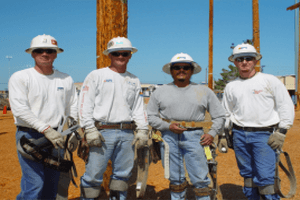
I was a construction inspector working with line crews that build overhead electric power transmission lines. Following written construction designs, the crews use massive crane trucks to insert enormous seventy- to eighty-foot wood poles in the ground. Then they go back to string heavy-gauge conductor (wire) between them. It’s tough, dirty, and sometimes dangerous work.

The men on these crews are weather-beaten, hard-living, all-American linemen. Good men, straight out of the union hall, they have the surly countenance of loggers and roughnecks and are not apt to suffer fools gladly. These men do not practice yoga and burn incense.
I was working with such a crew in the hot, windswept backcountry of Eastern Oregon when I found fault with the work they had just completed. In sighting down a half-mile-long line stretch of six poles, one pole was clearly out of spec, two to three feet out of alignment with the others.
I pointed out the problem to the crusty foreman. To correct the error, he would have to order his men to go back with the heavy equipment, remove the poorly placed pole from the ground, fill in the old hole, drill a new hole, and then reset the pole in the proper alignment. My foreman was not pleased. Nobody likes to do the same job twice, especially when there is a degree of humiliation attached.
I will never forget his grizzled scowl and clear disdain for college boy inspectors like me as he spit on the ground, glared at me, and growled, “We’re building a (expletive) power line, not a (expletive) clock!”
Well, the pole was out of alignment, and his crew did go back to reset it properly, but his power line/clock analogy has stuck with me through the years. That cut-to-the-bone comment, however off-target in that particular circumstance, is an enduring reminder that the quality of work must not exceed the required result.
This is an excerpt from Work the System: The Simple Mechanics of making More and Working Less, 4th edition, by Sam Carpenter
Photo Credits: Linemen of Arizona Public Service
